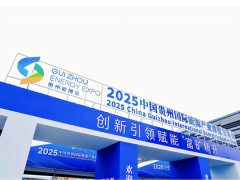據(jù)美國鉆井網(wǎng)站2022年9月1日報道,能源轉(zhuǎn)型的轉(zhuǎn)折點究竟發(fā)生在什么時候還有待商榷,但自2015年簽署《巴黎協(xié)定》以來,一系列宏觀變化結(jié)合在一起,最終推動一場如今已不可阻擋的能源轉(zhuǎn)型。
澳大利亞沃利公司氫氣部門副總裁漢斯·迪特爾·赫爾墨斯表示,人們對氣候相關(guān)風(fēng)險的意識不斷增強,對能源安全和供應(yīng)的政治和社會興趣日益濃厚,股東和投資者對ESG績效的壓力,以及公司做出重大減排承諾,這些都是切實的結(jié)果。
赫爾墨斯說:“在技術(shù)方面也有重大進展,可再生能源的成本大幅下降,在許多地方,可再生能源提供了最低成本的能源選擇。”
赫爾墨斯補充說:“當(dāng)然,這絕不是一種能源供應(yīng)解決方案向另一種能源供應(yīng)解決方案的簡單轉(zhuǎn)移,即使在一個凈零排放的世界里,我們?nèi)匀豢梢钥吹酱罅康氖秃吞烊粴獗挥糜谀茉春突瘜W(xué)原料,以抵消、碳捕獲使用和存儲以及直接空氣捕獲處理產(chǎn)生的排放。”
那么,這對石油和天然氣意味著什么呢? 根據(jù)赫爾墨斯的說法,有四個關(guān)鍵領(lǐng)域?qū)υ撔袠I(yè)產(chǎn)生了影響。
赫爾墨斯概述,首先是能源巨頭向“能源”公司的持續(xù)多樣化,包括更清潔、更低排放的燃料,電力行業(yè)(包括電動汽車、電子燃料、充電基礎(chǔ)設(shè)施,甚至零售公司),以及低排放氫等跨部門領(lǐng)域。
赫爾墨斯指出,第二是減少當(dāng)前作業(yè)和計劃開發(fā)的溫室氣體排放,第三是對最終減少石油和天然氣需求以實現(xiàn)全球凈零碳排放目標(biāo)的響應(yīng)。
國際能源署預(yù)測,全球石油需求最終將下降,盡管下降的速度還不確定。
赫爾墨斯補充說:“雖然油氣上游的資本投資在短期內(nèi)將會增加,但我們預(yù)計將會看到基于生產(chǎn)成本和碳強度項目的謹(jǐn)慎選擇以及持續(xù)關(guān)注資本高效項目的交付。”
最后,赫爾墨斯透露,石油和天然氣行業(yè)的另一個關(guān)鍵影響領(lǐng)域是將技能轉(zhuǎn)移到新能源轉(zhuǎn)型領(lǐng)域。
他說:“石油和天然氣行業(yè)擁有重要的專業(yè)知識,這對實現(xiàn)凈零世界至關(guān)重要,包括海上資產(chǎn)、管道、復(fù)雜加工廠和設(shè)備、鉆井和地下/海底工程的設(shè)計、安裝和操作。”
赫爾墨斯補充說:“達到凈零排放的基礎(chǔ)設(shè)施部署的規(guī)模是令人吃驚的,根據(jù)普林斯頓大學(xué)的凈零美國研究,僅在美國就需要10萬億美元,所有技能都將因此受到高需求。”
李峻 編譯自 美國鉆井網(wǎng)站
原文如下:
Energy Transition Now Unstoppable
It is debatable exactly when the tipping point occurred, but a series of macro changes have combined since the 2015 Paris Agreement to ultimately drive an energy transition that is now unstoppable.
That’s according to Hans Dieter Hermes, the VP of Hydrogen at Worley, who told Rigzone that rising awareness of climate related risk, more intense political and social interest in energy security and supply, shareholder and investor pressure on ESG performance, and companies making significant emissions reduction commitments are tangible outcomes of this.
“There has also been significant movement in technology, with the cost of renewable energy falling dramatically to the point where, in many locations, they offer the lowest cost energy option,” Hermes said.
“Of course, it’s never a simple transfer of one energy supply solution to another, and even in a net-zero world we still see significant quantities of oil and gas being used for energy and chemical feedstocks with offsets, carbon capture use and storage and direct air capture dealing with the emissions produced,” he added.
So what does this mean for oil and gas? Well, according to Hermes, there are four key areas of impact on the sector.
The first is the continued diversification of energy majors into “energy” companies, including into cleaner and lower emissions fuels, the electricity industry (including e-mobility, e-fuels, charging infrastructure and even retail companies), and cross-sector areas such as low emissions hydrogen, Hermes outlined.
The second is the reduction in greenhouse gas emissions from current operations and planned developments and the third is the response to the eventual reduction in demand for oil and gas required to meet global net zero objectives, Hermes pointed out.
“The International Energy Agency (IEA) predicts that oil demand will eventually decline, though the speed of this decline is not certain,” he said.
“While capital investment in upstream oil and gas will increase in the short term, we expect to see careful project selection based on cost of production and carbon intensity coupled with a continued focus on capital-efficient project delivery,” he added.
Finally, Hermes revealed that another key area of impact on the sector is the transfer of skills into new energy transition areas.
“The oil and gas industry has significant expertise which will be pivotal to meeting a net-zero world, including the design, installation and operation of offshore assets, pipelines, complex process plant and equipment, drilling and underground/undersea engineering,” he said.
“The scale of infrastructure deployment to reach net-zero is staggering, $10 trillion in the U.S. alone according to the Net Zero America study of Princeton, and all of the skills will be as a consequence in high demand,” he added.
免責(zé)聲明:本網(wǎng)轉(zhuǎn)載自其它媒體的文章及圖片,目的在于弘揚石化精神,傳遞更多石化信息,宣傳國家石化產(chǎn)業(yè)政策,展示國家石化產(chǎn)業(yè)形象,參與國際石化產(chǎn)業(yè)輿論競爭,提高國際石化產(chǎn)業(yè)話語權(quán),并不代表本網(wǎng)贊同其觀點和對其真實性負(fù)責(zé),在此我們謹(jǐn)向原作者和原媒體致以崇高敬意。如果您認(rèn)為本站文章及圖片侵犯了您的版權(quán),請與我們聯(lián)系,我們將第一時間刪除。







